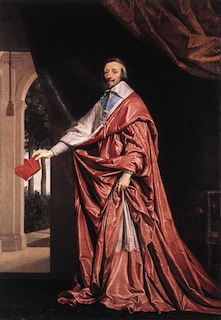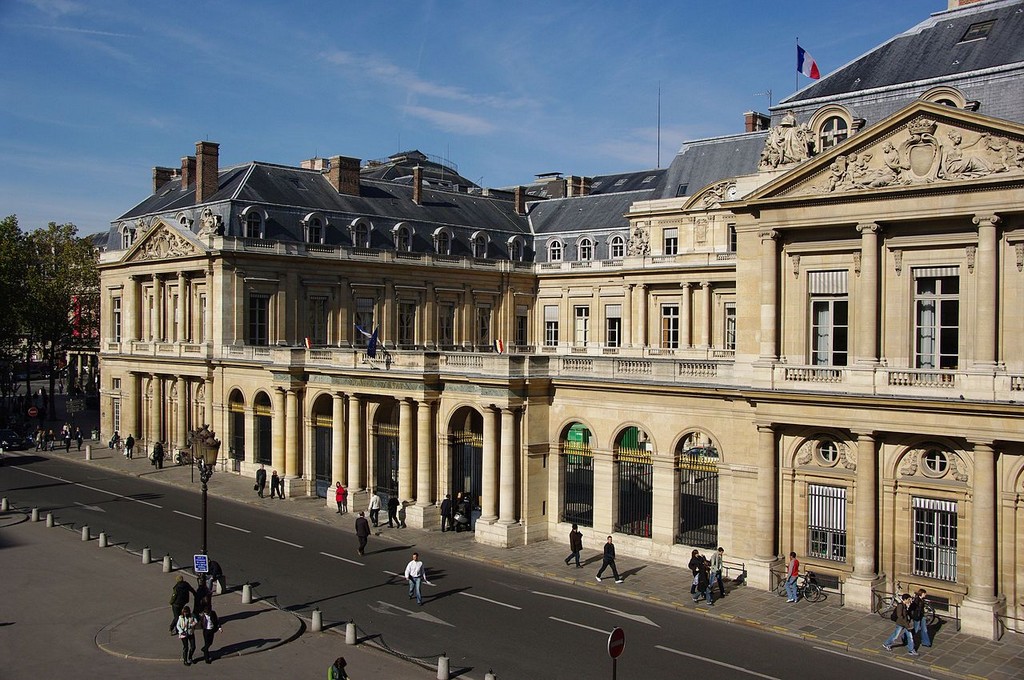Introduction
The Palais-Royal is "the capital in the capital", a city within a city incessantly enthusing one and all. Blending political and cultural history to contemporary culture, the palace is a true image of Paris. Rare are the sites that can demonstrate such concentration of historical events. Amidst takeovers, rebellions, festivals and transient pleasures, the palace would hosts aristocracy at times and common man at others. The facades and sculptures of the Palais-Royal reveal the different layers of French history from the 17th to the 20th centuries.
The Palace is primarily a center of political power: It is perceived to be the natural continuation of the Louvre Palace, residence of the Kings of France from the 14th to 17th centuries situated just opposite the Palais-Royal, on rue de Rivoli. This physical proximity is an indication of Cardinal Richelieu’s desire to live as close as possible to King Louis XIII thus emphasizing his own power.

Philippe de Champaigne (1602–1674)
Portrait of Cardinal Richelieu,
circa 1637, oil on canvas
(London, National Gallery)
On his death, Richelieu donated his residence to the King. The "Palais-Cardinal" thus becomes the "Palais-Royal" and twenty years later, in 1661, Louis XIV donated it to his brother Philippe of France, Duke of Orleans. From then on and until 1848, the history of the Palais-Royal is directly related to that of the descendants of the Dukes of Orleans, almost its sole residents during that period. In the 19th century the Orleans came to power with Louis Philippe, who after a brief period in the Palais-Royal, settled into the Palais des Tuileries.
The Palais-Royal was also a cultural center, with its theater, the opera house and the French Academy. Don’t power and culture attract each other? Even before Richelieu built his palace, he lived in the former Hôtel de Rambouillet, formerly Hotel d’Angennes and later Pisani, located on rue Saint-Honoré in the current location of the Palais-Royal. This hotel is not to be confused with its namesake, Hotel de Rambouillet, on rue Saint-Thomas-du-Louvre. The latter is already home to one of the first Parisian literary "salons".

Anonymous,
Portrait of Madame de Rambouillet
17th century
The salon, hosted by Catherine de Vivonne, marquise de Rambouillet, was frequented by many artists and thinkers, including writers like François de Malherbe, Pierre Corneille, Racan and Madeleine de Scudery. Cardinal Richelieu, who lived next to the Marquise was also a regular visitor. He, too, sought to provide a cultural vocation at his residence by establishing two theaters in the Palais-Cardinal.
The residence was, as well, a place of pleasure, if not debauchery: this dubious fame goes back to the time of the first Duke of Orleans, who, although married to Henrietta Anne of England, housed his lover, the Chevalier de Lorraine here. With Philippe d'Orléans, who became regent on the death of Louis XIV, the Palais-Royal became the privileged place of libertine feasts. In the late eighteenth century, Louis Philippe II, Duke of Chartres, Duke of Orleans, later called Philippe-Égalité, rented the apartments of the Palais-Royal and allowed prostitutes to entertain clients, away from the prying eyes and attention of the police who were prohibited access to the Palace, given its royal status.
The essay writer Louis-Sebastien Mercier, who lived in the late eighteenth century, wrote about the Palais-Royal in his Tableau de Paris:
"It is called 'the capital of Paris'. You can find everything here.[...] This enchanted dwelling is a small luxurious town, enclosed in a large one; it is the temple of pleasure, from where the brilliant vices have banished even the ghost of modesty: there is no tavern in the world more luxuriously depraved; one laughs here, and it is innocence that blushes yet again."
The recurrent alternation of power, culture and pleasure has given a very original identity to the Palais-Royal.
Today, in addition to the Ministry of Culture and Communication, the Palais-Royal houses the State Council, that advises the Government on the laws to be adopted. The Constitutional Council, another body instituted in 1958 and having its seat here, oversees the organization of the national elections and ensures the constitutional conformity of laws and regulations.

